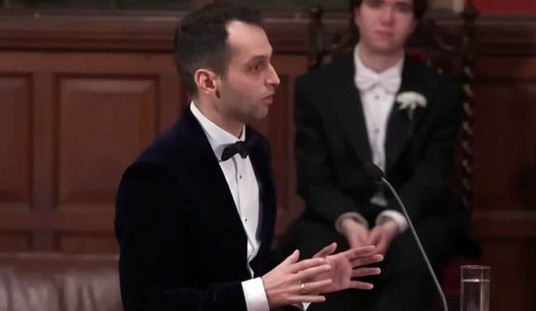I want to call this the feelgood story of the day but it’s the opposite. There are feelgood moments — Bin Laden ends up with a few extra postmortem bullet holes, and don’t miss the conversation the SEALs have on their way to the first briefing about the mission — but ultimately it’s the tale of a hero abandoned. No pension(!), no health care(!!), family troubles, little help transitioning to the private sector, and eternal worry about reprisals from jihadis. Everyone wishes they could have been the one to pull the trigger on Osama; see how you feel about that after the Esquire piece.
If you read only one eyewitness account today of the leader of Al Qaeda taking three bullets in the face, let it be this one.
The SEALs had nightscopes, but it was coal-black for bin Laden and the other residents. He can hear but he can’t see.
He looked confused. And way taller than I was expecting. He had a cap on and didn’t appear to be hit. I can’t tell you 100 percent, but he was standing and moving. He was holding her in front of him. Maybe as a shield, I don’t know.
For me, it was a snapshot of a target ID, definitely him. Even in our kill houses where we train, there are targets with his face on them. This was repetition and muscle memory. That’s him, boom, done.
I thought in that first instant how skinny he was, how tall and how short his beard was, all at once. He was wearing one of those white hats, but he had, like, an almost shaved head. Like a crew cut. I remember all that registering. I was amazed how tall he was, taller than all of us, and it didn’t seem like he would be, because all those guys were always smaller than you think.
I’m just looking at him from right here [he moves his hand out from his face about ten inches]. He’s got a gun on a shelf right there, the short AK he’s famous for. And he’s moving forward. I don’t know if she’s got a vest and she’s being pushed to martyr them both. He’s got a gun within reach. He’s a threat. I need to get a head shot so he won’t have a chance to clack himself off [blow himself up].
In that second, I shot him, two times in the forehead. Bap! Bap! The second time as he’s going down. He crumpled onto the floor in front of his bed and I hit him again, Bap! same place. That time I used my EOTech red-dot holo sight. He was dead. Not moving. His tongue was out. I watched him take his last breaths, just a reflex breath.
And I remember as I watched him breathe out the last part of air, I thought: Is this the best thing I’ve ever done, or the worst thing I’ve ever done?
The thought of Bin Laden standing there in the dark, disoriented, hearing the gunshots and melting with dread at what might be coming, is a small but satisfying bit of poetic justice for what people trapped in the Towers endured. Then, the shots. Quote: “His forehead was gruesome. It was split open in the shape of a V. I could see his brains spilling out over his face. The American public doesn’t want to know what that looks like.” I’m … not so sure that’s true, but okay. He ends up back at the base in Afghanistan, eating a breakfast sandwich while standing next to Bin Laden’s body and watching Obama announce the killing on TV. He gives the CIA agent who helped find Bin Laden, a woman you already know, the magazine that was in his gun when he shot him. Later, he retires from the service after 16 years (four short of pension eligibility), returns to civilian life, and has to cope with near-zero support from the government. Which, I assume, is why he’s talking about this now: It’s too dangerous to identify himself, as lucrative as that would be, but by publicizing his situation maybe he can shame the feds into doing better by their elite veterans.
Exit question: How can the guy who shot Bin Laden not be eligible for military health insurance?









Join the conversation as a VIP Member